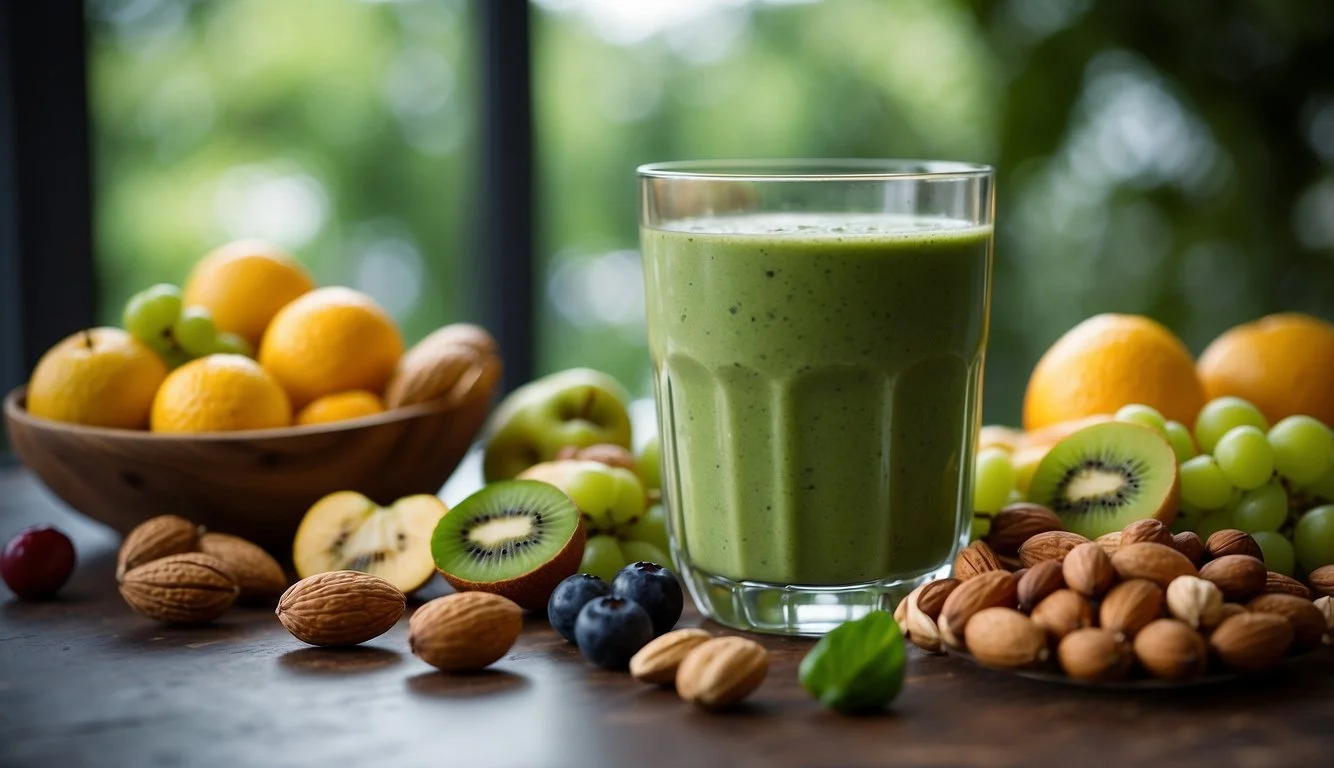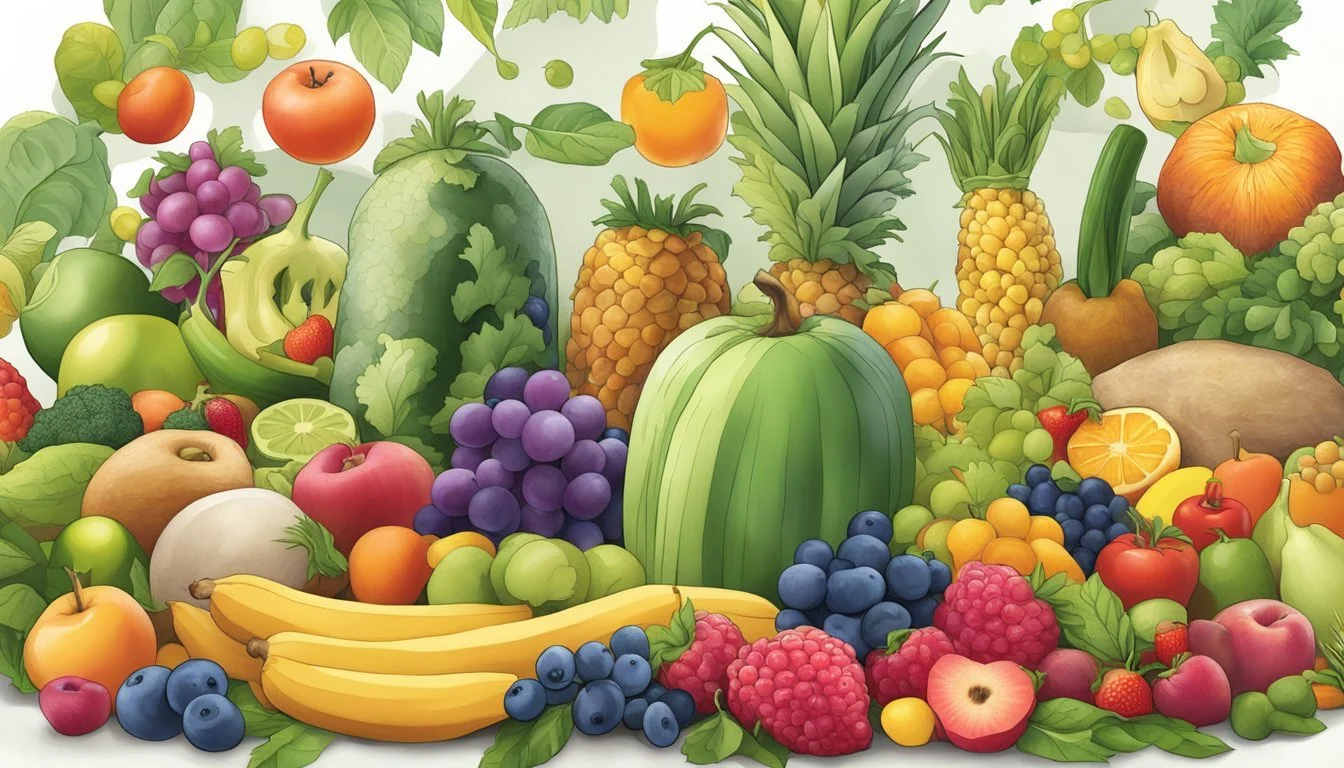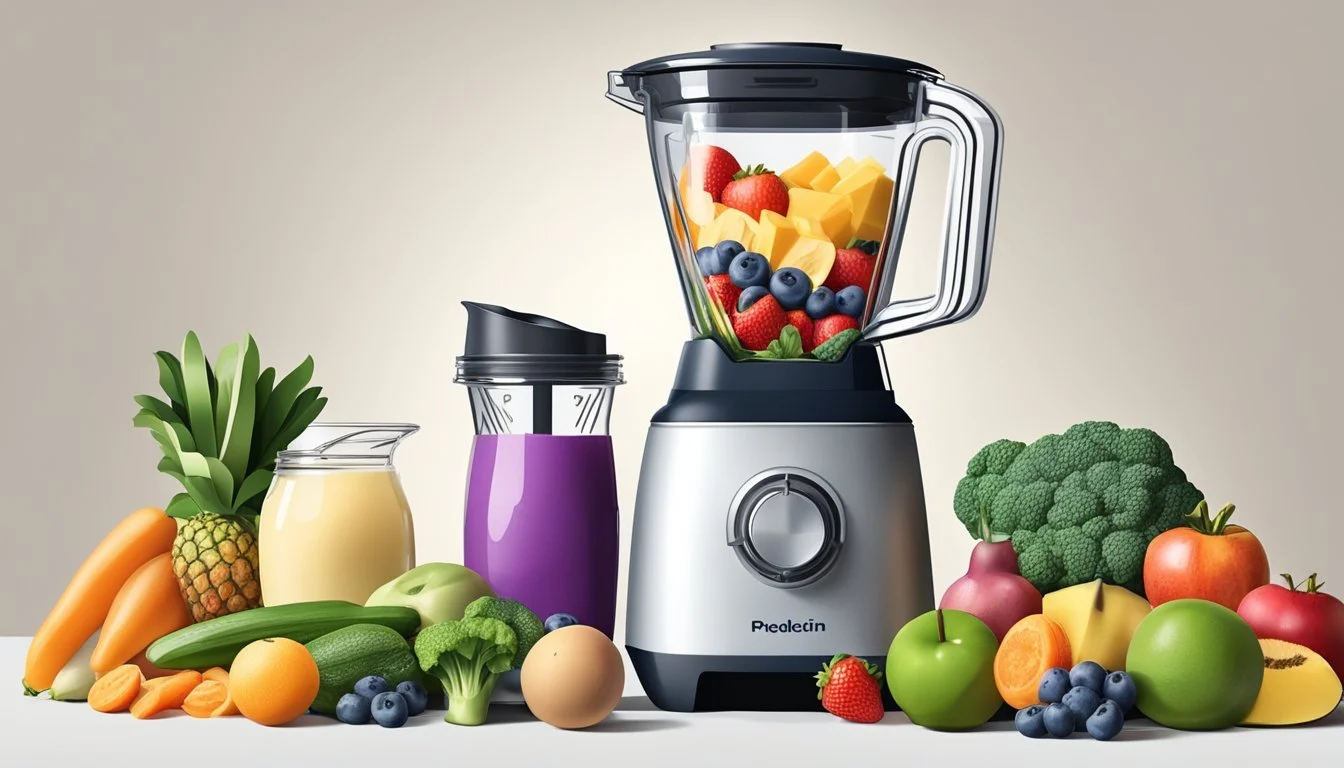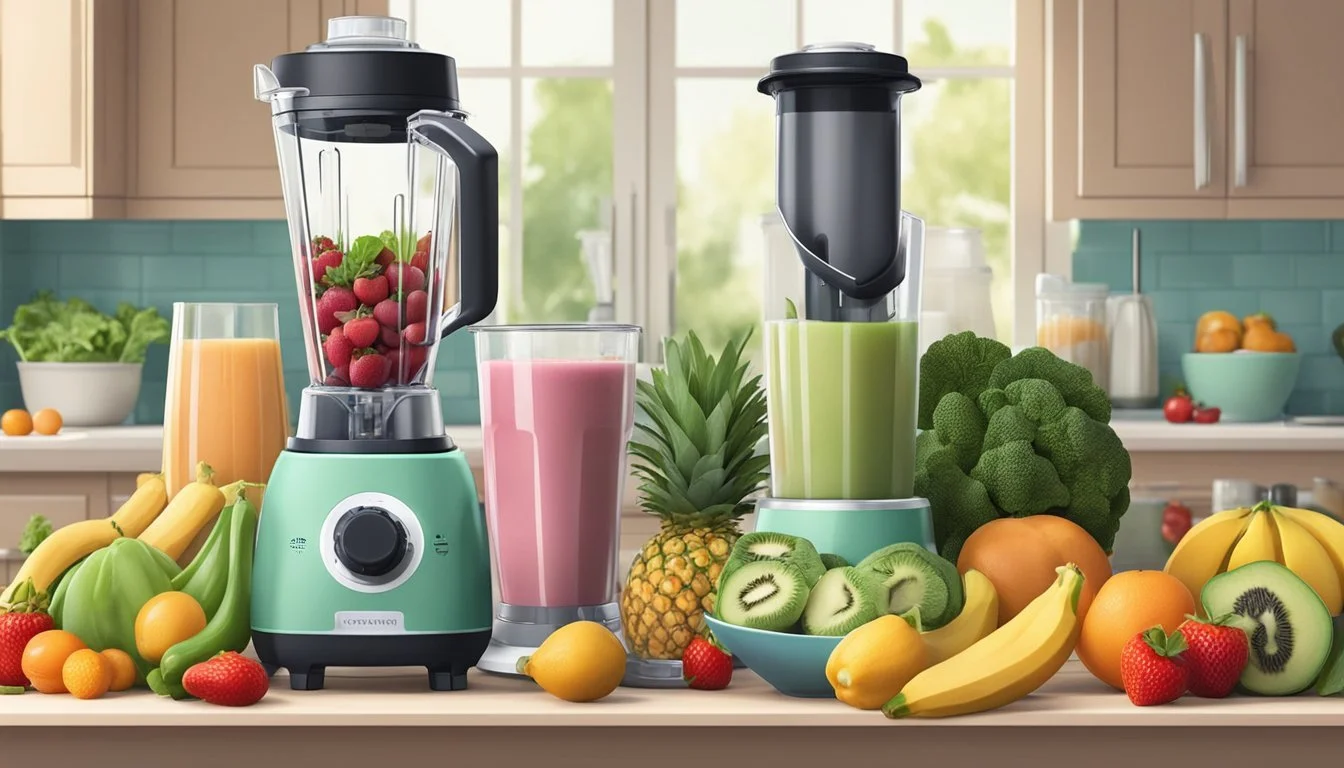Animal-Based Smoothies: Nutrient-Rich Recipes for Optimal Health
Smoothies aren't just for fruit lovers anymore—animal-based smoothies are revolutionizing the way we think about health and nutrition. These nutrient-dense beverages combine ingredients like raw kefir, collagen powder, and organ meat supplements to create a protein-packed drink. This approach lets you incorporate essential minerals and vitamins in a convenient, delicious form.
An animal-based smoothie is more than just a drink; it’s a holistic way to nourish the body. Including options like unpasteurized milk and microplastic-free sea salt ensures a purer intake of nutrients. For those who follow a carnivore or keto diet, these smoothies offer a practical solution to meet dietary needs without compromising on flavor.
Beyond convenience, the health benefits are substantial. Collagen powder and raw dairy contribute to improved gut health and skin elasticity. Opting for animal-based ingredients can provide a rich source of essential amino acids and healthy fats, making it an excellent option for those looking to optimize their diet.
Understanding Animal-Based Smoothies
Animal-based smoothies integrate ingredients derived from animal sources, providing a rich array of nutrients. These smoothies can offer high levels of protein, healthy fats, vitamins, and minerals, setting them apart from their plant-based counterparts.
Definition and Overview
Animal-based smoothies primarily include ingredients from animal sources such as raw dairy, eggs, and specific animal-based protein powders. These can feature raw kefir, raw milk, heavy cream, egg yolks, and beef organ supplements. Often, a small amount of fruit or natural sweeteners like maple syrup or honey is added to enhance flavor.
These smoothies are designed to be nutrient-dense and support diets focused on animal products, such as the carnivore diet or other low-carb, high-fat lifestyles.
Nutritional Benefits
One of the primary advantages of animal-based smoothies is their high protein content. Ingredients like egg whites and specific protein powders provide a complete amino acid profile necessary for muscle repair and growth.
Healthy fats from heavy cream and raw dairy contribute to satiety and sustained energy. Additionally, these smoothies are rich in essential vitamins and minerals, often including B vitamins, calcium, and omega-3 fatty acids, which are crucial for overall health.
This nutrient density makes them a powerful option for those looking to maximize their nutritional intake, especially in diets that limit plant-based foods.
Comparison with Plant-Based Smoothies
Animal-based smoothies differ significantly from plant-based smoothies in several ways. While plant-based smoothies often rely on ingredients like fruits, vegetables, and plant-derived protein powders, animal-based smoothies focus on delivering robust amounts of protein and fats through animal products.
Plant-based smoothies tend to be higher in fiber and antioxidants due to their fruit and vegetable content. They are also automatically dairy-free and suitable for vegan diets. In contrast, animal-based smoothies are inherently rich in specific vitamins and minerals that are more bioavailable in animal products.
By focusing on ingredients like raw dairy and animal organ supplements, animal-based smoothies can cater to those on a keto or carnivore diet who seek nutrient density and protein without the presence of carbohydrates found in many plant-based options. Using both types of smoothies strategically can help individuals meet their nutritional goals irrespective of dietary preferences.
Essential Ingredients
Animal-based smoothies utilize various nutritious elements to create a balanced and healthful drink. These key ingredients typically include animal-derived proteins, natural fats, and flavorful additives that enhance both taste and nutritional value.
Animal-Based Protein Sources
Animal-derived protein is fundamental to these smoothies. Raw kefir, a fermented milk, offers probiotics and proteins beneficial for digestion and muscle repair. Collagen powder and whey protein are also popular choices, boosting tissue health and supporting muscle growth. Organ meat supplements provide vital vitamins and minerals. Egg yolk can be included for additional protein, essential fatty acids, and nutrients like vitamin D and choline.
Natural Fats and Oils
Healthy fats are crucial for energy and nutrient absorption. Common choices include coconut cream, rich in medium-chain triglycerides (MCTs) for sustained energy. Nut butters like almond butter add a creamy texture and essential fats. Avocado is another excellent source, providing monounsaturated fats and a smooth consistency. Raw kefir also contributes healthy fats. Coconut milk offers a combination of fat and a slight sweetness, enhancing overall flavor.
Additives for Flavor and Nutrition
Flavors and additional nutrients can elevate the smoothie experience. Raw honey and maple syrup act as natural sweeteners without the drawbacks of refined sugar. Adding a touch of sea salt can enhance the flavor profile. Vanilla extract imparts a pleasing aroma and taste. For those who prefer a fruity twist, blending in frozen blueberries or banana can provide antioxidants, sweetness, and a thicker texture.
Consider integrating these ingredients to craft nutrient-dense, delicious animal-based smoothies.
Online stores offer unbeatable prices for raw honey and sea salt, so don't miss out!
Smoothie Preparation Techniques
Preparing a delicious animal-based smoothie requires selecting the right equipment, mastering blending methods for optimal consistency, and implementing tips for prepping ingredients effectively.
Selecting the Right Equipment
The right equipment is crucial for making a smooth and tasty smoothie. A high-powered blender is essential to thoroughly blend ingredients like frozen bananas, kefir, and raw milk.
Equipment Recommendations:
Blender: Look for one with at least 1000 watts.
Mason jars: Ideal for storing and transporting smoothies.
Measuring cups and spoons: For accurate ingredient measurements.
Using the right tools ensures your smoothie has a consistent texture and rich flavor.
Discover the endless possibilities of buying blender, mason jars, and measuring cups and spoons online!
Blending Methods for Optimal Consistency
Achieving the perfect consistency starts by adding liquids first, such as raw kefir or milk, then layering solid ingredients on top.
Steps for Optimal Blending:
Liquids First: Ensure smooth blending by adding liquids at the bottom.
Ice and Frozen Fruits: Add frozen bananas and ice next.
Soft Ingredients: Place softer items, like raw cream and maple syrup, on top.
Blend on a high setting until smooth. This method helps in creating a vortex in the blender, pulling all ingredients towards the blades.
Tips for Prepping Ingredients
Prepping ingredients in advance can save time and enhance the smoothie-making process. For instance, freezing fruits like bananas ensures they stay fresh and adds a creamy texture.
Preparation Tips:
Freeze Ingredients: Store chunks of bananas or berries in freezer-safe bags.
Pre-measure Portions: Use mason jars to pre-measure and store individual smoothie portions.
Layering: When storing in jars, layer ingredients with liquids at the bottom for hassle-free blending later.
These steps not only reduce prep time but also ensure that ingredients are at their peak freshness and flavor when it's time to blend.
Types of Animal-Based Smoothies
Animal-based smoothies can be tailored to fit various dietary goals and preferences. These smoothies often rely on nutrient-dense ingredients like raw dairy, high-quality protein powders, and essential fats to provide specific health benefits.
High-Protein and Muscle-Building Smoothies
High-protein, muscle-building smoothies typically include ingredients like collagen powder, and raw dairy. These smoothies are designed to support muscle repair and growth.
A common recipe might include 1-2 scoops of collagen powder from a reputable source, combined with 1½ cups of unpasteurized milk from goat, sheep, or A2 cows. Adding nutrient-rich ingredients like raw eggs or beef organs can enhance the protein content. For flavor, consider adding a pinch of Ceylon cinnamon or vanilla extract.
Smoothies for Digestive Health
Smoothies focused on digestive health often incorporate raw kefir or similar fermented dairy products. These ingredients are rich in probiotics, which aid in gut health.
A simple recipe might involve blending raw kefir with fruit options like frozen bananas and blueberries. Adding fiber sources such as chia seeds can further support digestion. A pinch of microplastic-free sea salt, such as the Redmond brand, can be included to balance the flavors and improve mineral intake.
Ketogenic and Low-Carb Options
For those adhering to a ketogenic or low-carb diet, animal-based smoothies need to emphasize healthy fats and minimal carbohydrates. Coconut cream or heavy raw cream serves as an excellent fat source.
Blend coconut cream with raw milk or cream, a dash of organic maple syrup for a touch of sweetness, and perhaps some beef organs for protein. Ingredients like lucuma can add a hint of natural sweetness while keeping the carb content low. Remember to measure ingredients carefully to maintain ketosis.
Using nutrient-dense, quality ingredients ensures these smoothies are not only satisfying but also aligned with keto or low-carb dietary goals.
Flavor Combinations and Recipes
Animal-based smoothies offer a variety of flavors and nutritional benefits. They can range from classic combinations to innovative twists and even seasonal or exotic flavors, each providing unique taste experiences.
Classic Recipes
Classic animal-based smoothie recipes focus on tried-and-true combinations that are both delicious and nutritionally dense.
Banana Peanut Butter Smoothie combines creamy raw milk, a ripe banana, and a dollop of natural peanut butter. This mix provides a hefty dose of protein and healthy fats. A touch of honey or maple syrup can be added for sweetness.
Blueberry Banana Smoothie features raw kefir, frozen blueberries, and banana. This option is rich in probiotics and antioxidants. A scoop of coconut yogurt enhances the creamy texture.
Mango Pineapple Smoothie uses raw milk or yogurt blended with frozen mango chunks and pineapple. The tropical fruits provide a refreshing and sweet flavor profile, making it perfect for a refreshing morning drink.
Innovative Twists on Traditional Recipes
Creating innovative twists on traditional recipes involves incorporating unusual ingredients to bring new flavors and textures.
Avocado Smoothie partners raw milk with ripe avocado, lime juice, and a hint of honey. This combination balances creaminess with a slight tang, offering a nutritious and high-fiber drink.
Coffee Smoothie blends cold brew coffee, raw cream, and a banana for a morning energizer. A dash of cinnamon or cocoa powder can enhance the flavor. For added protein, a dollop of almond butter can be included.
Celery Smoothie includes raw yogurt, celery, and a green apple. This blend offers a crisp and refreshing taste, ideal for those looking for a less sweet option. Lemon juice can be added for extra zest.
Seasonal and Exotic Flavors
Seasonal and exotic flavors introduce unique ingredients to delight the palate and provide a variety of benefits.
Banana Peach Smoothie combines fresh or frozen peach slices with a banana and raw kefir. It’s a sweet, summery blend full of vitamins. Honey can be used as a sweetener if needed.
Pineapple Coconut Smoothie mixes raw coconut cream, pineapple chunks, and a splash of raw milk. This blend offers a tropical flavor that is both rich and invigorating. Maple syrup can sweeten the drink if required.
Berry Mango Smoothie features frozen mixed berries, mango chunks, and raw kefir or milk. This colorful and nutrient-dense smoothie is perfect for a vibrant start to the day.
Each recipe capitalizes on the unique flavors of the ingredients while providing a balance of nutrients, making them both delicious and beneficial.
Nutritional Information and Diet Integration
Animal-based smoothies offer rich nutritional value, providing essential macronutrients that cater to various dietary needs. These smoothies can be tailored to fit into diverse diets, including ketogenic and carnivore plans.
Caloric and Macronutrient Breakdown
Animal-based smoothies, typically made with ingredients like raw dairy, eggs, and meats, pack a significant caloric punch. A standard serving may contain 350-500 calories, with macronutrient ranges as follows:
Protein: 20-30 grams
Fats: 25-35 grams
Carbohydrates: 10-20 grams
These values can vary depending on the specific ingredients used. For instance, a smoothie that includes raw kefir, beef organs, or heavy cream will have higher protein and fat content. These smoothies are often rich in essential amino acids and conjugated linoleic acid (CLA), which are beneficial for muscle repair and overall health.
Incorporating Smoothies into Different Diets
Animal-Based Diet: These smoothies align perfectly with an animal-based diet. Ingredients like raw kefir, heavy cream, eggs, and organic meats ensure the diet retains its focus on animal products.
Carnivore Diet: For those following a carnivore diet, these smoothies can be a convenient breakfast or afternoon snack option. They can be crafted without fruits or sweeteners, sticking strictly to animal ingredients to maintain zero-carb intake.
Keto Diet: The high fat and moderate protein content of animal-based smoothies make them suitable for a ketogenic diet. Including medium-chain triglyceride (MCT) oil or heavy cream can enhance the fat content, helping maintain ketosis.
These smoothies are not ideal for vegan diets, given their reliance on animal products. However, they can be customized for other diet plans, ensuring versatility and nutrient density for various health goals.
Health Considerations and Allergies
When incorporating animal-based smoothies into a diet, it's crucial to consider potential allergies and specific health issues. Adjustments and substitutions may be necessary to accommodate dietary restrictions and health conditions.
Addressing Common Food Sensitivities
Individuals with common food sensitivities need to modify their smoothie recipes carefully. For dairy-free diets, substituting raw milk or kefir with plant-based alternatives like almond milk or coconut milk can prevent adverse reactions.
Those with nut allergies should avoid adding nuts or nut-based milk and instead use seeds like chia or flax. Gluten-free options, such as oats and quinoa, can replace traditional grains like wheat or barley for those with gluten sensitivities.
Common Substitutions:
Nut-free: Chia seeds
Gluten-free: Quinoa
These substitutions ensure the smoothie remains nutritious while being safe for individuals with specific dietary needs.
Modifications for Specific Health Issues
Animal-based smoothies can be tailored to provide health benefits for various conditions. For those with diabetes, incorporating low-sugar fruits such as berries and avoiding added sugars like maple syrup is beneficial.
People managing hypertension should opt for ingredients high in potassium, like bananas and leafy greens, while reducing sodium intake. High cholesterol can be addressed by including fiber-rich ingredients such as oats and seeds.
Diabetes: Low-sugar fruits (berries)
Hypertension: High-potassium foods (bananas)
Cholesterol: Fiber-rich foods (oats)
Tailoring smoothies to meet these specific health needs ensures they contribute positively to overall well-being.
Practical Tips and Advice
Creating animal-based smoothies can be straightforward with some preparation and awareness of serving sizes. These tips will help streamline the process and ensure that the smoothies are a healthy addition to your meal plan.
Making Smoothies in Advance
Preparing smoothies in advance can save time and make mornings easier. Mason jars are a great option for storage as they keep the smoothie fresh and prevent leakage. Portion ingredients the night before and store them in the fridge. When ready, blend, pour into the jar, and take it with you.
For those who prefer their smoothies icy, use frozen ingredients, and store the blended mixture in the freezer. Thaw it overnight in the refrigerator for a quick morning meal. Remember to give it a good shake before drinking to ensure a smooth consistency.
Portion Control and Serving Sizes
Managing portion sizes is crucial for a balanced diet. Generally, a smoothie should be between 12 to 16 ounces, which equates to about 1.5 to 2 cups. This size ensures an adequate intake of calories and nutrients without overconsumption.
Use measuring cups to ensure accuracy when adding ingredients. Be mindful of calorie-dense additions like raw milk, cream, or maple syrup. Balancing these with lower-calorie ingredients like water or ice can help maintain the desired nutritional content. Keeping a food journal or using a meal planning app can aid in maintaining consistent portions and tracking dietary intake.
Resources
There are numerous resources available for those looking to explore animal-based smoothies. These include books and guides filled with recipes and nutritional advice, as well as online platforms and communities where enthusiasts can share tips and experiences.
Books and Guides
Books and guides are invaluable for anyone seeking comprehensive information on animal-based smoothies. Paul Saladino's "The Carnivore Code" provides detailed insights on incorporating animal products into one's diet, including smoothie recipes.
Cookbooks like "The Wild Diet" by Abel James also offer practical recipes. Many of these guides cover ingredient choices, such as raw kefir or collagen powder, and provide step-by-step instructions to create nutrient-rich smoothies.
With illustrations and detailed nutritional breakdowns, these guides are designed to educate and inspire readers.
Online Platforms and Communities
Online platforms and communities also provide valuable resources. Websites like Reddit host active forums such as r/AnimalBased, where users share recipes and success stories.
Social media platforms, including Instagram and Facebook, offer groups and accounts dedicated to animal-based diets. Influencers like Paul Saladino share daily tips and smoothie recipes.
Additionally, many websites offer webinars and online courses. These platforms often feature live demonstrations, allowing participants to see the preparation of various smoothies in real-time. Blogs and YouTube channels can also provide step-by-step video tutorials for visual learners.














